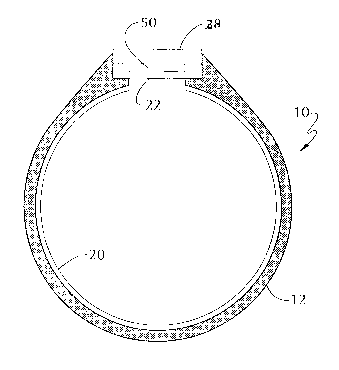Some of the information on this Web page has been provided by external sources. The Government of Canada is not responsible for the accuracy, reliability or currency of the information supplied by external sources. Users wishing to rely upon this information should consult directly with the source of the information. Content provided by external sources is not subject to official languages, privacy and accessibility requirements.
Any discrepancies in the text and image of the Claims and Abstract are due to differing posting times. Text of the Claims and Abstract are posted:
| (12) Patent Application: | (11) CA 2138629 |
|---|---|
| (54) English Title: | LIGHTING STRUCTURE FOR INTENSELY ILLUMINATING NARROW LINEAR REGION |
| (54) French Title: | STRUCTURE POUR PROJETER UNE LUMIERE INTENSE SUR UNE ETROITE REGION LINERAIRE |
| Status: | Deemed Abandoned and Beyond the Period of Reinstatement - Pending Response to Notice of Disregarded Communication |
| (51) International Patent Classification (IPC): |
|
|---|---|
| (72) Inventors : |
|
| (73) Owners : |
|
| (71) Applicants : |
|
| (74) Agent: | OYEN WIGGS GREEN & MUTALA LLP |
| (74) Associate agent: | |
| (45) Issued: | |
| (22) Filed Date: | 1994-12-20 |
| (41) Open to Public Inspection: | 1996-06-21 |
| Availability of licence: | N/A |
| Dedicated to the Public: | N/A |
| (25) Language of filing: | English |
| Patent Cooperation Treaty (PCT): | No |
|---|
| (30) Application Priority Data: | None |
|---|
A lighting structure for intensely illuminating
a narrow linear region. A light source emits light into an
end of a hollow, elongate light guide. A longitudinal slit
light-emitting aperture extends through an external wall of
the light guide. A lens is mounted in the aperture. The
lens bears a plurality of prisms which extend substan-
tially perpendicular to the slit, on an inwardly directed
face of the lens. The lens may be formed of a film ma-
terial. A mechanism is provided to maintain the lens flat.
A diffuser mounted outwardly of the lens bears a plurality
of thin striations extending transversely, relative to the
longitudinal slit aperture.
Note: Claims are shown in the official language in which they were submitted.
Note: Descriptions are shown in the official language in which they were submitted.

2024-08-01:As part of the Next Generation Patents (NGP) transition, the Canadian Patents Database (CPD) now contains a more detailed Event History, which replicates the Event Log of our new back-office solution.
Please note that "Inactive:" events refers to events no longer in use in our new back-office solution.
For a clearer understanding of the status of the application/patent presented on this page, the site Disclaimer , as well as the definitions for Patent , Event History , Maintenance Fee and Payment History should be consulted.
| Description | Date |
|---|---|
| Time Limit for Reversal Expired | 2002-12-20 |
| Application Not Reinstated by Deadline | 2002-12-20 |
| Inactive: Status info is complete as of Log entry date | 2002-02-06 |
| Deemed Abandoned - Failure to Respond to Maintenance Fee Notice | 2001-12-20 |
| Inactive: Abandon-RFE+Late fee unpaid-Correspondence sent | 2001-12-20 |
| Application Published (Open to Public Inspection) | 1996-06-21 |
| Abandonment Date | Reason | Reinstatement Date |
|---|---|---|
| 2001-12-20 |
The last payment was received on 2000-07-19
Note : If the full payment has not been received on or before the date indicated, a further fee may be required which may be one of the following
Patent fees are adjusted on the 1st of January every year. The amounts above are the current amounts if received by December 31 of the current year.
Please refer to the CIPO
Patent Fees
web page to see all current fee amounts.
| Fee Type | Anniversary Year | Due Date | Paid Date |
|---|---|---|---|
| MF (application, 3rd anniv.) - small | 03 | 1997-12-22 | 1997-11-05 |
| MF (application, 4th anniv.) - small | 04 | 1998-12-21 | 1998-10-05 |
| MF (application, 5th anniv.) - small | 05 | 1999-12-20 | 1999-09-22 |
| MF (application, 6th anniv.) - small | 06 | 2000-12-20 | 2000-07-19 |
Note: Records showing the ownership history in alphabetical order.
| Current Owners on Record |
|---|
| TIR SYSTEMS LTD. |
| Past Owners on Record |
|---|
| ALLAN BRENT YORK |
| GEORGE EVERETT MATHESON |
| GRANT WILLIAM ROLAND HARLOW |